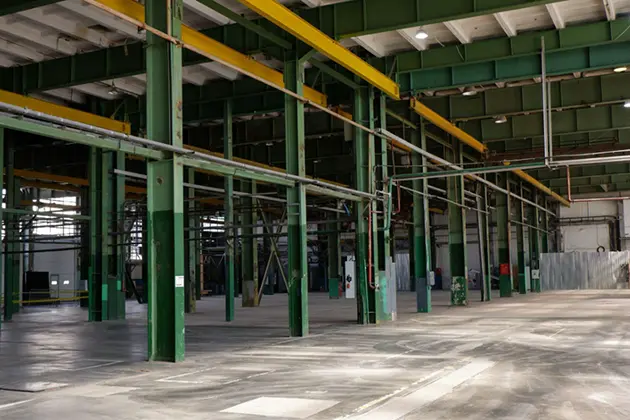- Durability is key in modern construction, requiring strong materials like reinforced concrete and composites to ensure long-lasting buildings.
- Steel and metal works are essential for enhancing structural strength and flexibility, making them ideal for innovative designs.
- Sustainable materials and practices, such as recycled metals and energy-efficient designs, are increasingly important in eco-friendly construction.
- Balancing aesthetics with structural integrity allows for visually stunning buildings that also prioritize safety and longevity.
Designing buildings that are both strong and sustainable is more important than ever in today’s construction landscape. Whether it’s for residential, commercial, or industrial spaces, the demand for structures that can stand the test of time while minimizing environmental impact is growing. Achieving this balance involves selecting the right materials, using innovative techniques, and planning for longevity.
In this blog, you’ll discover essential tips for designing buildings that prioritize durability and sustainability. We’ll cover methods for maximizing structural strength, discuss how sustainable materials can make a difference, and provide insights into best practices for design. By the end, you’ll have a clearer understanding of how to approach building design in a way that ensures both resilience and eco-consciousness.
The Importance of Durability in Modern Construction
In today’s fast-paced world, buildings need to be more than just aesthetically pleasing; they must be built to last. Durability is a crucial factor in modern construction because it ensures that structures can withstand the wear and tear of time, weather, and daily use. A building that isn’t durable can lead to increased maintenance costs, potential safety hazards, and a reduced lifespan.
Balancing durability with aesthetics is one of the biggest challenges for architects and contractors. While it’s tempting to focus solely on how a building looks, choosing materials that offer both strength and beauty is key. For example, reinforced concrete, engineered wood, and composites are often used for their ability to provide structural integrity without sacrificing design.
Durable buildings not only stand the test of time but also minimize the need for constant repairs and updates. Investing in high-quality materials upfront can save time, money, and resources in the long run, making durability a priority in every phase of construction.
Enhancing Strength with Modern Materials
For buildings that need to withstand immense pressure and stress, certain materials offer a level of strength that traditional options simply can’t match. Among these, steel and metal works have become indispensable in modern construction. They provide not only unmatched durability but also flexibility, allowing for innovative and daring architectural designs.
The ability of steel to support heavy loads while maintaining a slim profile makes it a favorite for structures like skyscrapers and large bridges. Meanwhile, metal reinforcements are often added to areas requiring extra stability, helping distribute weight more effectively and fortifying key sections of a building.
Incorporating these materials means fewer repairs and longer-lasting results. They’re highly resistant to fire, corrosion, and weather damage, making them ideal for projects that demand both strength and longevity.
Sustainability in Construction: Materials and Practices
In the push for environmentally responsible building, sustainability has become just as important as strength. Selecting eco-friendly materials and practices is not only good for the planet, but it can also lead to long-term cost savings and enhanced building performance.
Recycled materials are gaining popularity in construction. From recycled steel to reclaimed wood, these options help reduce the demand for new raw materials. Sustainable alternatives like bamboo and low-carbon concrete offer builders more ways to lessen their environmental footprint without compromising on durability.
Beyond materials, sustainable practices like energy-efficient designs and waste reduction during the building process are becoming standard. By incorporating these strategies, builders create structures that conserve resources and reduce emissions, contributing to a greener future.
Balancing Aesthetics with Structural Integrity
One of the greatest challenges in modern architecture is combining style with substance. Beautiful designs are great, but they must also hold up over time. Achieving this balance involves selecting materials that are both strong and visually appealing, as well as smart engineering that ensures structural integrity without compromising aesthetics.
For example, exposed metal frameworks are becoming a trend in contemporary buildings, adding a sleek, industrial look while also reinforcing the structure. Similarly, glass and steel combinations create light-filled, modern spaces that are as strong as they are stylish.
Incorporating innovative materials allows architects to play with design without sacrificing the building’s durability. The goal is to ensure that the structure remains safe, stable, and visually captivating for years to come.
Best Practices for Long-Lasting Building Design
When designing buildings that stand the test of time, several best practices can make a significant difference. One of the most important considerations is planning for future adaptability. A building that can easily accommodate changes or expansions without requiring major renovations is far more likely to maintain its functionality and value over time.
Choosing materials that age well is also crucial. Materials like stone, treated wood, and certain metals can develop a unique patina over time without losing their structural integrity. These materials don’t just withstand the elements—they evolve with them, adding character to the building while maintaining strength.
Regular maintenance is another vital factor in ensuring longevity. Scheduling periodic inspections and upkeep can help catch small issues before they become major problems. Additionally, close collaboration between architects, engineers, and construction teams ensures that the building’s design, materials, and structure all work together to create something built to last.
Conclusion
Designing strong and sustainable buildings requires a careful balance of materials, techniques, and forward-thinking practices. By focusing on durability through innovative materials like steel and metal works, and embracing sustainable construction methods, architects and builders can create structures that not only stand tall but also minimize environmental impact.
From selecting the right materials to planning for the future, these best practices contribute to buildings that last for decades while maintaining their visual appeal and structural integrity. Whether you’re working on a residential project or a large-scale commercial build, these strategies ensure your design stands the test of time.









